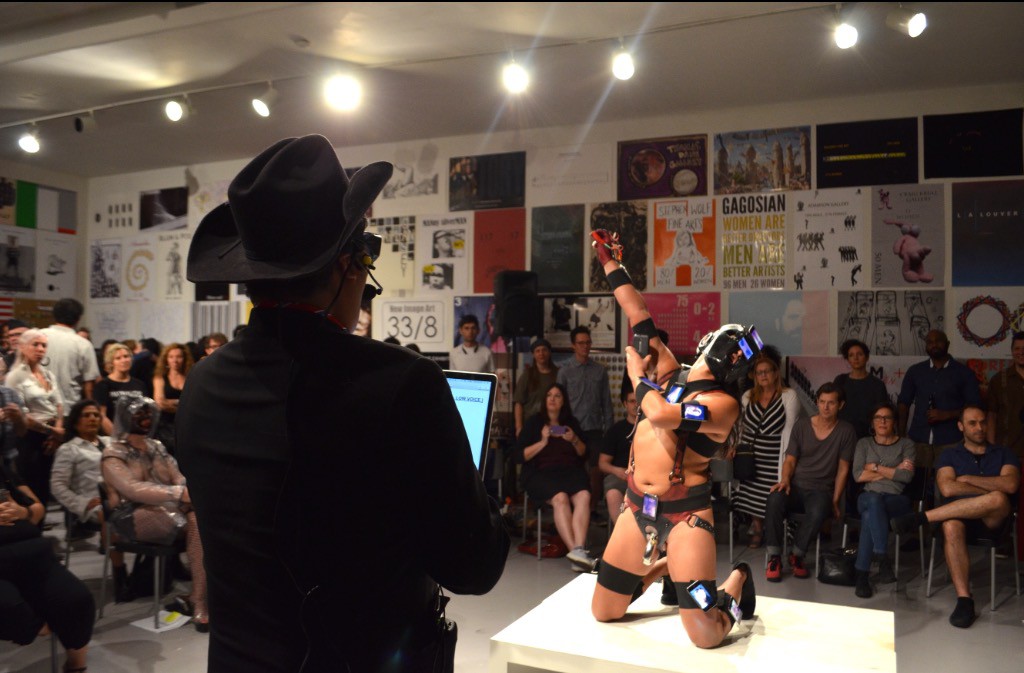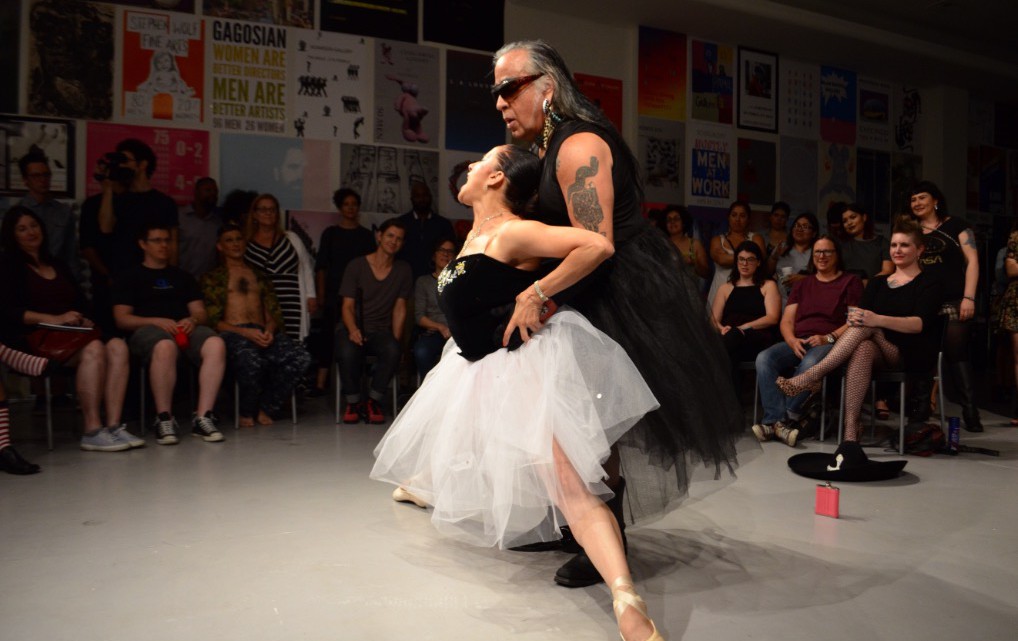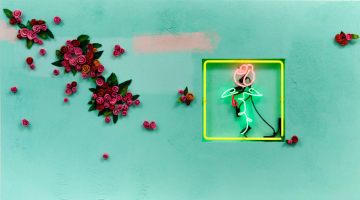La Pocha Nostra: Five Psycho-Magic Actions Against Violence
LACE
6522 Hollywood Blvd., Los Angeles, CA 90028
April 1, 2016
Through the entryway of Los Angeles Contemporary Exhibitions (LACE), laughter reverberated off the walls. As I walked into the main gallery the vision and sonic boom of Guillermo Gomez-Peña, decked in all-black ballerina attire, guided the audience towards the center of the room. Posing on a platform was a “Cyborg Sex Worker” fitted in a headset, leather straps, and mask. Adorned with screenshot images of body parts captured and secured on a series of iPhones, these images of genitals, lips, legs, and ears were disaggregated, appearing behind the performer’s, elbows, and stomach. Flowing between Spanish and English, the Cyborg answered callers’ desires, moving the phone to the viewer’s choice, asking what colored pussy (blond, brunette, or black?) and simulated fulfillment of their suitor’s wishes. The audience, half-spectator, half-participant, laughed in these moments—absolutely infatuated with the complex and complicated performance of sex, consumption, and comedy. And this was the all in first five minutes.

La Pocha Nostra, LACE, Los Angeles, April 16, 2016. Photo by Annie Martens. Courtesy of LACE.
The latinx, queer, performance troupe La Pocha Nostra’s Five Psycho-Magic Actions Against Violence was a performance of a radical, decolonial, satirical critique. The violence within western ideology at large was engaged within the space of queerness, capitalism, colonialism, ageing, gender, and aesthetics throughout the show’s five acts. The border, which is foundational to La Pocha Nostra’s work, became a site to be made fluid, offering new visions of possibilities within the fissuring of those seemingly inherent and inflexible lines. Spanish unfixes the presumption and hierarchy of English within every act, weaving itself whole, untranslated, and of value.

La Pocha Nostra, LACE, Los Angeles, April 16, 2016. Photo by Annie Martens. Courtesy of LACE.
Masculinity is embodied as a queer practice entangled within the tropes of femininity (nude and vulnerable form) and not the sole proprietor of flesh. In the act titled “History of Western Art in 15 Minutes” members Michele Ceballos Michot and Saul Garcia Lopez performed canonical images ( e.g. The Birth of Christ, Sistine Chapel, The Pieta, The Scream, Chac Mool) in western aesthetics as Gomez-Peña narrated the historical marks of brutality, racism, whiteness, and Christian dogma within their reenactments. Noting the difference of their bodies—brown, queer, and aging—these visual pinnacles of western and white supremacy were sites of critical resignification, which remarked upon the insidious makings of dominant aesthetics and the abjection of brown folks within their creation.

La Pocha Nostra, LACE, Los Angeles, April 16, 2016. Photo by Annie Martens. Courtesy of LACE.
As spectators we were asked by Gomez-Peña to participate in stamping “disminución/decline” or “aprobar/approve” on the bodies of these living art pieces, he made all in the room culpable in the materiality of beauty, value, and desirability. Yet, within these moments of graphic rememory and mimetic transgressions the audience was asked to pull out their cell phones, to instagram and catalog what unfolded before them. Here, lightness and mirth were entangled with scenes of subjection and capitalism; and this truth, of the messiness of decolonial visions of the future, resonated throughout the night.
Guillermo Gomez-Peña is in residence at 18th Street Arts Center for the month of April.



